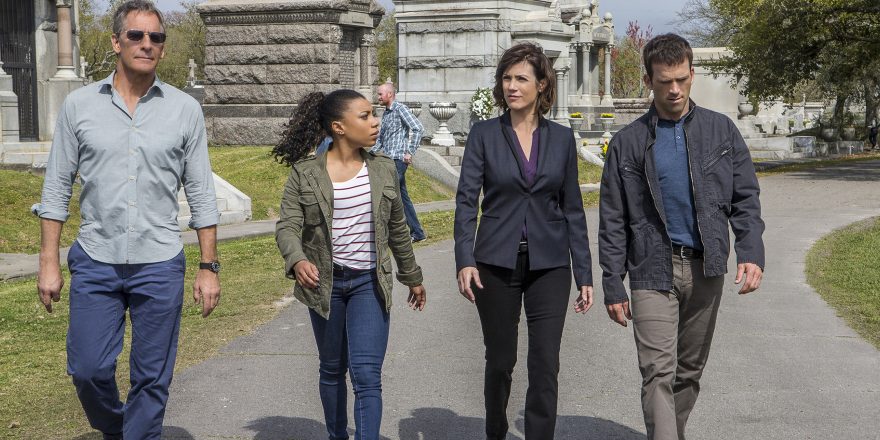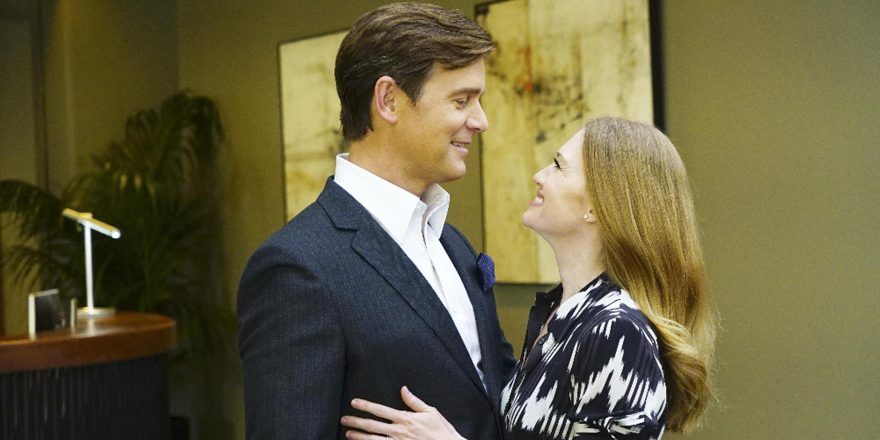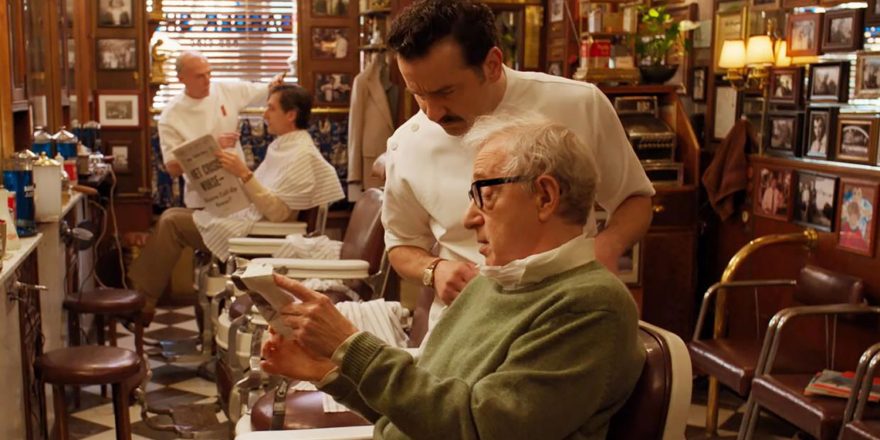Quentin Tarantino has repeatedly – and correctly – praised Howard Hawks’ Rio Bravo for the way in which Hawks constructs an atmosphere of breezy relaxation; although the film is structurally rock solid thanks to screenwriters Jules Furthman and Leigh Brackett, it creates the impression that the characters in the sheriff’s station are just hanging out, with only minimal anxiety about the violence just outside the door. The unforced camaraderie that Hawks elicits from John Wayne, Dean Martin, Ricky Nelson and Walter Brennan is one of the most infectiously pleasurable achievements in the American cinema – you can feel the joy the actors are taking in their work, and that joy extends to the audience for every one of Rio Bravo’s 141 minutes. We feel not only that these characters are friends, but that they’re our friends, and part of the movie’s appeal comes from the fantasy that our real-life partners should be as loyal, warm, reliable and skilled as the crew that helps Wayne protect his town.
I think this is also the appeal of one of the most enduring shows on network TV, NCIS, which began as an offshoot of JAG in 2003 and has since gone on to inspire two of its own spinoffs, NCIS: Los Angeles and NCIS: New Orleans. All three iterations of the show are highly addictive, but their allure is less about the mysteries that drive each episode than the fact that each show is anchored by an ensemble that offers up on a weekly basis pleasures not dissimilar to those of Rio Bravo. The original NCIS established the template with its team of Naval Criminal Investigative Service investigators led by Mark Harmon, whose work on the show has always been and continues to be underrated. It’s not the kind of role that wins Emmys – Harmon’s a bit too understated in his technique – but over the course of 14 years, Harmon has managed to consistently evade action hero clichés by fusing (without forcing) his natural affability and charm to a kind of stony intolerance for bureaucracy and incompetence.
The character, in microcosm, contains the combination of attributes both hot and cold that make all of the people on NCIS and its spinoffs such satisfying audience surrogates. The shows recall not just Rio Bravo but countless other classical Hollywood Westerns in their depiction of characters who are instantly relatable yet morally, physically and intellectually superior to 99% of the people we come across in real life (which, of course, makes us want to relate to them even more). And as with Hawks, what makes the NCIS franchise special and sets it apart from other procedurals is how organic all of this feels; each episode follows a fairly rigid formula, yet the crime stories don’t feel as synthetic or clichéd as one might expect. They’re fully integrated with the characters and locations in a way that makes each element feel interdependent – the reason the shows emanate the same kind of casual naturalism that Hawks’ Westerns do is precisely because of how casual the creators aren’t.
This is particularly true of the newest incarnation of the franchise, NCIS: New Orleans. NCIS: NOLA just completed its third year, and it’s really found its groove in the last couple seasons, evolving into not only one of the most entertaining but one of the most visually and sonically interesting shows on television. The basic premise of NCIS agents solving cases involving military personnel and U.S. security remains consistent, but the filmmakers and actors get added mileage out of the New Orleans setting – more than you might expect. The filmmakers don’t just plop their actors and plots down into the locations; they let the New Orleans ambience seep into the fabric of the overall design, so that even when the characters are on interior sets there’s a continuity of light and color that separates NCIS: NOLA from its companion shows – as well as from all the other procedurals on television. The show is warmer than most crime series, reliant on a palette of vivid reds, purples and greens, dictated by the neon-drenched city in which the stories take place. Cinematographer Gordon Lonsdale accentuates these hues with smoke and other forms of diffusion that give the images literal heat – his photography conveys a palpable sense of humidity rivaled only by Do the Right Thing and Body Heat.
This vibrancy extends to the show’s use of camera movement, which is extraordinarily dynamic yet not chaotic – there’s no handheld for handheld’s sake, but a feeling of constant motion driven by the characters and facilitated by the sets. The cameras move just as much on NCIS: NOLA as they do on any other action series, but the movement is more graceful and involving because it’s motivated by point of view rather than any kind of superficial attempt to gin up false energy. The directors don’t need to resort to unmotivated gimmicks, because the energy is inherent in the material; even the obligatory scenes of investigators back at headquarters talking through the cases have an earned kineticism that comes from the filmmakers’ astute way of linking angles and cuts to specific perspectives. Of course, it helps that the headquarters set is a model of architecture at the service of drama – as conceived by production designer Victoria Paul, it has so many entrances and exits and frames within frames that one rarely sees the same camera position repeated. And when the series does go on location and leave the dialogue behind for its action set pieces, the results are often astonishing. The season three premiere, “Aftershocks,” for example, is a self-contained masterpiece of suspense: working from Brad Kern’s deliciously scary script about a sniper terrorizing the city, director James Hayman crafts an exercise in tension that would have made Hitchcock proud, a case study in how to play the audience like a piano.
That episode and others benefit from audacious and layered sound design that often incorporates music in ways unusual for network television. Again, the New Orleans setting is influential here, as the filmmakers have clearly taken their cue from the diverse and constant music that plays throughout the city. There’s a lot of live performance on the show of the type you might expect – in bars and clubs, on the street, etc. – but what’s unusual is the way it’s implemented and recorded. All of the performances on NCIS: NOLA are recorded live, not performed to playback, and it gives the music a buoyancy difficult to find in canned, antiseptic musical numbers on other shows. This is aided by a mix that weaves the performances in and out of the action in ways that one doesn’t always notice, but which add texture to the series; music is constantly playing on NCIS: NOLA, but it’s not always front and center. The show uses music the way George Lucas did in American Graffiti, as part of a fluid aural tapestry, presenting music the way we hear it in daily life – sometimes in the foreground, sometimes fading in and out, sometimes as something that will only resonate later in memory. It’s all beautifully tied together, week in and week out, by Brian Kirk’s blues and jazz-inflected score.
Music also informs and adds dimension to the show’s lead character, lead agent Dwayne Pride, who’s a musician himself and whose temperament – reserved and amiable on the surface but passionate and a bit melancholy underneath – finds its fullest expression at the keyboard. Pride is played by Scott Bakula, who brings such an easygoing warmth to his performance that one might think he was merely playing himself if he hadn’t been equally convincing in so many totally different roles. (If you want to get a taste of his breadth, just compare his work as Pride to his turns in Steven Soderbergh’s The Informant and Behind the Candelabra.) Like Harmon, he’s confident and wise enough not to push for his effects, which makes the scenes in which he reveals his depth and vulnerability – such as those with his beloved daughter and his estranged wife – subtly powerful; they sneak up on you. The series as a whole has done a nice job of slowly but steadily deepening its characterizations within the demands of a procedural, giving other cast members like Lucas Black, CCH Pounder and Rob Kerkovich subplots and digressions that complement the show’s main order of business. At its best, as in the “Escape Plan” episode from season three in which Kerkovich’s character is kidnapped, the series seamlessly integrates character development and action in a way that gives a 45-minute TV episode the heft and satisfactions of a two-hour feature film.
The uniformly strong cast (which also includes Daryl “Chill” Mitchell, Shalita Grant and Vanessa Ferlito) makes it all seem effortless, imbuing even the most arcane technical dialogue with an agile spontaneity – the actors make you believe that they actually know what they’re talking about no matter how deep in the weeds the scripts take them. They also make you believe that they’re really friends, who really care about each other – and they do it through gesture and action, not explicit verbal overtures. While making Rio Bravo, Howard Hawks was insistent that John Wayne’s character never say “I love you” to Angie Dickinson’s character – he thought it would be more moving and persuasive if Wayne didn’t say it. He was right, and the creators of NCIS: New Orleans – as well as NCIS and NCIS: Los Angeles – seem to share his sensibility and instincts, resulting in some of the liveliest and most purely enjoyable filmmaking on television.






